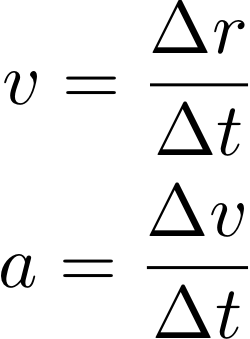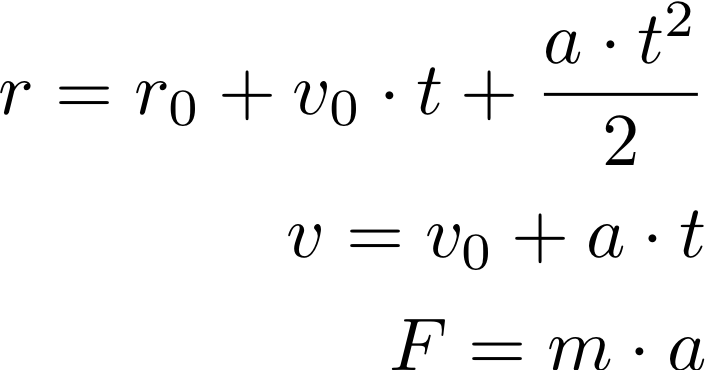The Three Laws
In intro physics, there are three laws of mothion you need to know:
- Inertia: an object stays in motion unless an external force changes that motion. It also encompaces the opposite, an object at rest will remain at rest unless and external force is applied. Think of an air hokey table with an infiite length. The puck will go significantly further when the air is on than when it is off. The air we breath causes a drag (the external force that causes the puck to to stop).
- Force is equal to the mass multipled by the change in velocity with respect to time (acceloration): F=ma (the vectors are in bold).
- Every action has an equal and oposite reaction. If you push on a wall, what prevents you from falling through? The wall pushes back on you.
These laws dictate motion. Using both these laws and some equations, we can predict how objects will move.
Useful Initial Equations
Before the equations, consider the following. In your high school math classes you learned about plotting, slopes, and quadratic equations. All the equations used here are going to use these concepts!
If we look at displacement, velocity, and acceleration for example. The velocity is the change in position with respect to time (a slope). Acceleration is the change in velocity with respect to time (another slope!)

I recomend keeping this in the back of your head, and using your graphing calculator or Wolfram alpha to plot.
I’ve attached three useful equations below. They are written in a general notation, where r, v, a, and F can represent a displacement in x, y, or z. Any variable with the subscript 0, is the initial value for the system (say your initial velocity is 2 m/s in x this would be an initial velocity).

The first equation predict where an object will move at specific times. The second equation predicts how an objects velocity changes, again with respect to time. The third equation is Newton’s second law. There are more! For the moment I won’t go further than these.